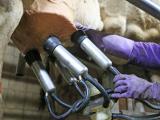Feb 11, 2004 (CIDRAP News) – An avian influenza virus from a Vietnamese woman who was one of four family members to have the illness did not contain any human flu genes, indicating that the virus did not spread from person to person, the World Health Organization (WHO) said today.
"Virus genetic material from this woman, as for the other case in this cluster, is of avian origin and contains no human influenza genes," the WHO said.
The woman, aged 23, and an older sister both died recently of confirmed H5N1 avian influenza, the WHO reported previously. Virus from the older sister was also found to be of avian origin, according to previous reports. A brother also died of a similar illness, and his wife was sick but recovered. Neither the brother nor his wife was tested to identify the cause of illness.
Authorities studied the cluster of cases because it suggested the possibility of person-to-person transmission, especially since two of the patients had no history of exposure to infected poultry. All other recent human cases of H5N1 avian influenza have been linked to exposure to poultry. Disease experts fear that an H5N1 virus could combine with a human flu virus to form a new strain that could spread from person to person, potentially sparking a pandemic.
In other developments, the WHO today issued a 25-page set of guidelines for global surveillance of H5N1 avian flu in humans and animals. The aim of the guidelines is to improve reporting of the disease, especially any signs of human-to-human transmission. The guidelines include a definition of a laboratory-confirmed human case and procedures for reporting cases to the WHO.
See also:
Feb 11 WHO update on avian flu
http://www.who.int/csr/don/2004_02_11/en/





















